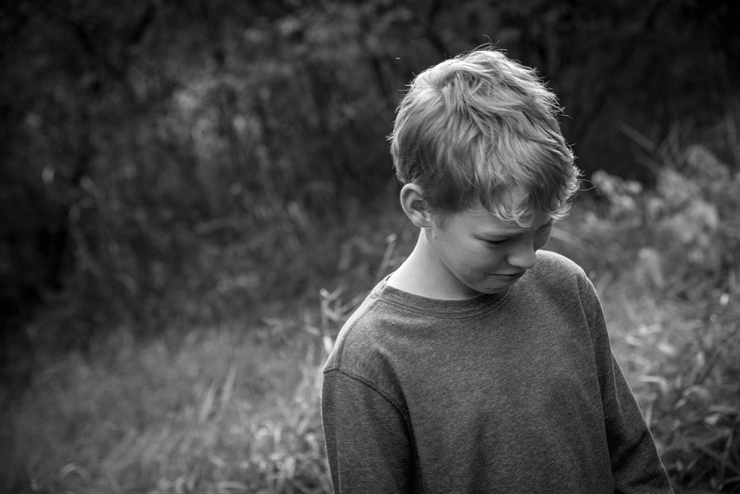A new study by researchers at the University of Cambridge finds that the government-imposed lockdowns in response to the coronavirus pandemic cause significant harm to children’s mental health. The study, published this week in the Archives of Disease in Childhood, was the first of its kind to analyze data on younger children’s mental health before and during the first lockdown in the United Kingdom last spring.
Following 168 children between the ages of 7 ½ and 11 ½, the researchers conclude: “During the UK lockdown, children’s depression symptoms have increased substantially, relative to before lockdown. The scale of this effect has direct relevance for the continuation of different elements of lockdown policy, such as complete or partial school closures.”
They continue: “Specifically, we observed a statistically significant increase in ratings of depression, with a medium-to-large effect size. Our findings emphasise the need to incorporate the potential impact of lock-down on child mental health in planning the ongoing response to the global pandemic and the recovery from it.”
Lockdowns and Declining Youth Mental Health
Other studies linking declining mental health with lockdown policies have emerged for adolescents and young adults in recent months, but children were not typically represented. For example, the CDC reported in August that 1 in 4 individuals ages 18-24 contemplated suicide during the spring lockdowns, and a recent Harvard study found startling rates of depression in young adults. Adolescent mental health has been hit particularly hard by the lockdowns and related social distancing policies. For example, a 16-year-old boy from Brunswick, Maine took his life last week after leaving a note saying that he felt locked in his house during the pandemic and separated from friends due to remote learning.
The new University of Cambridge paper is the first longitudinal study to trace the mental health effects of lockdowns and social isolation on younger children, finding that their mental health is similarly deteriorating during the pandemic response.
An article this week in the New York Times acknowledged the loneliness that children feel this year, but echoed a sense of inevitability. Describing the experience of a two-year-old who, upon encountering others, says “Uh-Oh. People,” the Times explains that “she’s part of a generation living in a particular new type of bubble — one without other children. They are the Toddlers of Covid-19. Gone for her and many peers are the play dates, music classes, birthday parties, the serendipity of the sandbox or the side-by-side flyby on adjacent swing sets.”
“Alice McGraw, 2 yrs old, was walking with her parents in Lake Tahoe this summer when another family appeared, heading in their direction. The little girl stopped.
‘Uh-oh,’ she said and pointed: ‘People.’”This isn’t going to end well, folks. @mrichtel:https://t.co/eRSzZ7AUQv
— Alec MacGillis (@AlecMacGillis) December 10, 2020
While the Times rightly points out that the most important relationships for toddlers are with their parents, the widespread acceptance of peer isolation of children during the past 10 months is unsettling. Keeping children away from sandboxes and swing sets, or depriving them of small birthday parties and playdates, is doing more harm than good—particularly where children are mostly spared from the worst effects of COVID-19 and their risk of dying from COVID-19 is, thankfully, extremely low. By contrast, the harm of lockdowns and other pandemic policies and practices that deprive young people of social connection is disturbingly high.
Ellen Townsend is a psychology professor at the University of Nottingham who has been speaking out about the harmful consequences of lockdowns and mass testing policies that are especially damaging to youth during the pandemic. Townsend, along with several colleagues, launched a website to try to influence policymakers away from damaging lockdowns and mass testing protocols.
“I am deeply concerned about the long-term impact on our children and young people both of lockdowns and mass testing. Face-to-face interaction and play is vital for healthy development from tots to teens,” Townsend told me a recent interview. “Living in a constant state of threat will have impacts on mental health and development also. I think mass testing will exacerbate this fear. Mass testing will perpetuate restrictive measures – this is a scientifically unsound and unethical screening program. Lockdowns are a disaster for the young and the disadvantaged.”
Townsend adds that these lockdown harms are not only temporary during the pandemic. They can have lasting effects. “We know that loneliness is being felt more acutely by young people than older people in this crisis. The mental health impacts of loneliness can last for up to 9 years,” she says.
What Can Parents Do?
The Wall Street Journal reported on Friday that COVID-19 vaccine trials for children are beginning, but noted that vaccines will likely not be ready for children by the start of the 2021/2022 academic year. That could mean many more months of isolation for children unless parents push back against lockdowns, school closures, and related coercive policies that are harming young people most of all.
Stanford’s Jay Bhattacharya, one of the co-authors of the Great Barrington Declaration that advocates a “Focused Protection” approach to the pandemic response, wrote recently: “In effect, what we’ve been doing is requiring young people to bear the burden of controlling a disease from which they face little to no risk. This is entirely backward from the right approach.”
In addition to resisting new and ongoing lockdown policies, parents can also take the lead in ensuring that their children have crucial social interaction.
Whether by forming “pods” with other families to encourage safe socializing, encouraging teens to take a walk with their friends, or prioritizing sandbox play with other toddlers, parents can help to protect their children’s mental health and well-being in the months to come.
This article was originally published on FEE.org. Read the original article.![]()
Image Credit:
Image from Pixabay

Leave a Reply